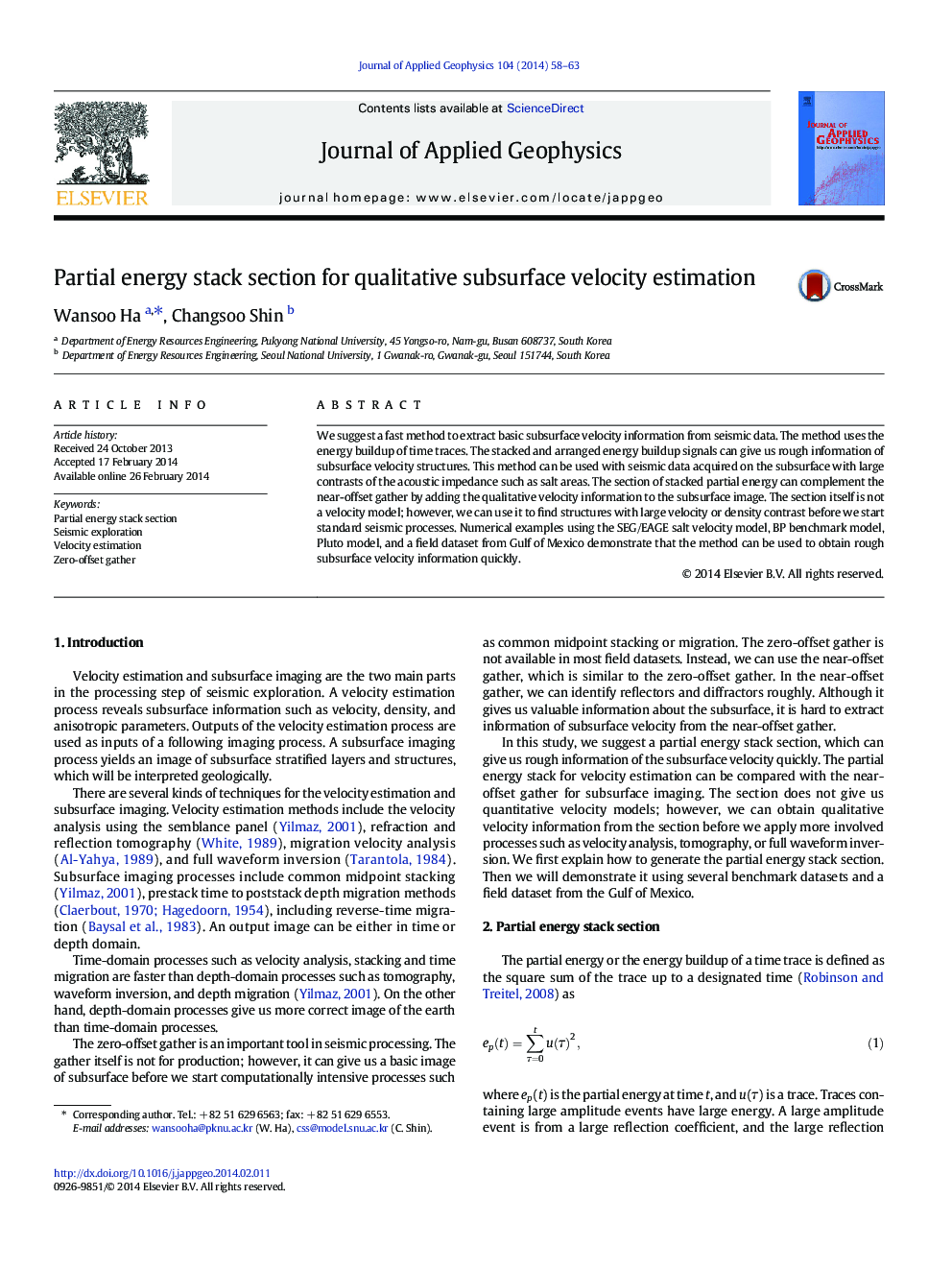| Article ID | Journal | Published Year | Pages | File Type |
|---|---|---|---|---|
| 4740199 | Journal of Applied Geophysics | 2014 | 6 Pages |
•A partial energy stack section gives us information about impedance contrasts.•The partial energy stack section can complement the zero-offset gathers.•The section is a qualitative preprocessing tool for a fast data examination.
We suggest a fast method to extract basic subsurface velocity information from seismic data. The method uses the energy buildup of time traces. The stacked and arranged energy buildup signals can give us rough information of subsurface velocity structures. This method can be used with seismic data acquired on the subsurface with large contrasts of the acoustic impedance such as salt areas. The section of stacked partial energy can complement the near-offset gather by adding the qualitative velocity information to the subsurface image. The section itself is not a velocity model; however, we can use it to find structures with large velocity or density contrast before we start standard seismic processes. Numerical examples using the SEG/EAGE salt velocity model, BP benchmark model, Pluto model, and a field dataset from Gulf of Mexico demonstrate that the method can be used to obtain rough subsurface velocity information quickly.
